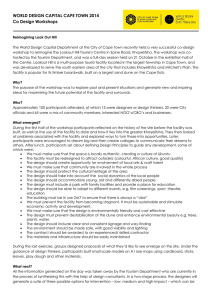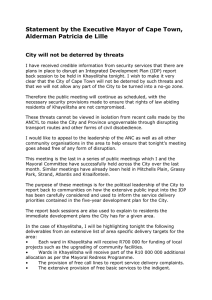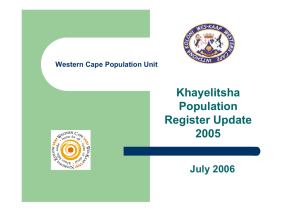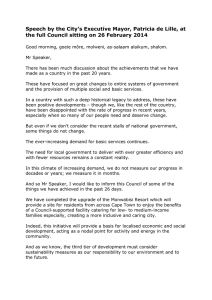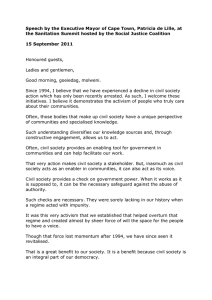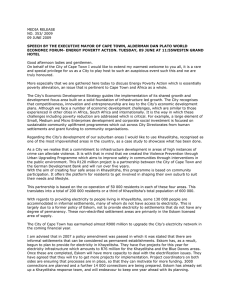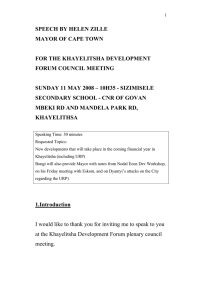WORLD DESIGN CAPITAL CAPE TOWN 2014 Co-design workshops Ward
advertisement
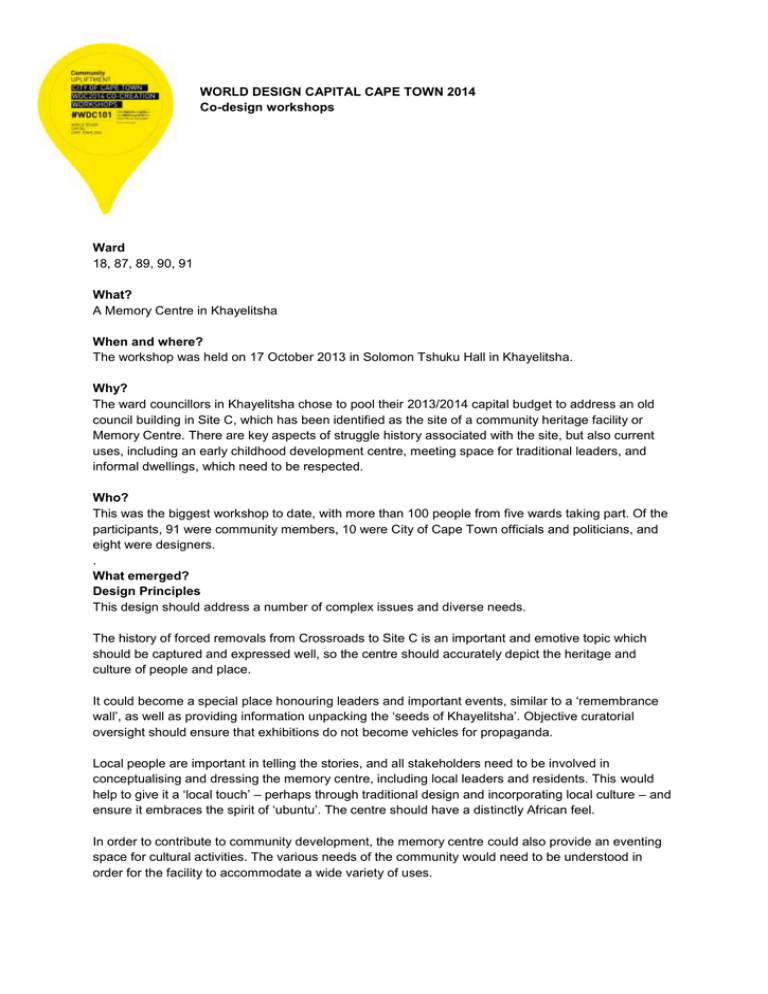
WORLD DESIGN CAPITAL CAPE TOWN 2014 Co-design workshops Ward 18, 87, 89, 90, 91 What? A Memory Centre in Khayelitsha When and where? The workshop was held on 17 October 2013 in Solomon Tshuku Hall in Khayelitsha. Why? The ward councillors in Khayelitsha chose to pool their 2013/2014 capital budget to address an old council building in Site C, which has been identified as the site of a community heritage facility or Memory Centre. There are key aspects of struggle history associated with the site, but also current uses, including an early childhood development centre, meeting space for traditional leaders, and informal dwellings, which need to be respected. Who? This was the biggest workshop to date, with more than 100 people from five wards taking part. Of the participants, 91 were community members, 10 were City of Cape Town officials and politicians, and eight were designers. . What emerged? Design Principles This design should address a number of complex issues and diverse needs. The history of forced removals from Crossroads to Site C is an important and emotive topic which should be captured and expressed well, so the centre should accurately depict the heritage and culture of people and place. It could become a special place honouring leaders and important events, similar to a ‘remembrance wall’, as well as providing information unpacking the ‘seeds of Khayelitsha’. Objective curatorial oversight should ensure that exhibitions do not become vehicles for propaganda. Local people are important in telling the stories, and all stakeholders need to be involved in conceptualising and dressing the memory centre, including local leaders and residents. This would help to give it a ‘local touch’ – perhaps through traditional design and incorporating local culture – and ensure it embraces the spirit of ‘ubuntu’. The centre should have a distinctly African feel. In order to contribute to community development, the memory centre could also provide an eventing space for cultural activities. The various needs of the community would need to be understood in order for the facility to accommodate a wide variety of uses. The space should be well planned to prevent clutter and ensure enough space for people to enjoy exhibitions. Safety features such as surveillance and monitoring of the facility and an on-site caretaker should be included to prevent crime. The old building should not be fundamentally altered, and the new addition/s and surrounds should be easily maintained, visually attractive, durable, safe, and accessible. The centre should be well marketed as a destination in Khayelitsha for local and international visitors, so special emphasis should be given to aesthetic appeal and 'landmark' characteristics. In particular, a green rest area would add great value to the community. Any management programme should be sustainable, with strong links into the community: the centre's custodians. A desired legacy of the memory centre project is a renewed spirit of unity, with community members involved and working hand-in-hand to achieve something great. Vision Two designs were proposed by a textile designer and an interactive designer. Common to both was the idea of creating a 'place', not simply an object. The first proposal is a low-impact design of natural and low-tech materials, a second floor meeting space added to the existing exhibition building, a modified container resource centre and the remainder of the site taken up with a large garden. Key words in the design process included, document, participate, record, learn, heal, teach, well-being, community, information, resource, connect, youth, income generation, and sustainability. The second proposal, 'Centre for Memory AND Dialogue', includes a framed 'tower' erected as a functional beacon over and above the existing building. Interactive, new-tech displays suggested include mapping community stories, dialogue labs, audio memory recording, collective art, user-driven pixel facades, fixed and roving exhibitions on the upper floors and a viewing deck on the top. Space is given for community and visitors to relax, braai, eat and play local games. What next? The proposals were presented to the subcouncil. The Architecture department is currently involved in design development. However, the current status is unclear due to spending deadlines for large pockets of capital budget.
